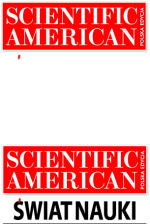 2006
2006
 2008
2008
 2010
2010
 2012
2012
 2014
2014



 |
Feel like having a new fur
‘Occurrence of fleas on birds and mammals in Poland’
Radosław Dybała – author of photographs,
“On the edge of the forest” Observation of Cerathophyllus gallinae on the host ( May 2011) Corrections: unsharp masking |

|
Description popularizing the research project
As Jonathan Swift observed: ‘…a flea Hath smaller fleas that on him prey; And these have smaller still to bit 'em; And so proceed ad infinitum.’ Sometimes it happens that a saying or a quote can be understood literally. In case of furry mammals and feathery birds, it certainly can. They get their fleas in different ways but always involuntarily. A very efficient method to get them is hunting and eating their host. Small predators often penetrate holes and burrows in search of rodents. Having dealt with them, they take over the place with all the benefit of inventory. They are minute squatters, the size of a pinhead, invisible to the new owner of the place. The residents of all development stages, including eggs and chrysalis, sit hidden in all the corners of the tunnels and chambers. The stages unable to move on their own are swept with the fluffy fur of the new host. If they are not groomed, they will reach the adult stage and be able to give life to legions of new parasites. From the perspective of a flea, the saying should go like that: ‘every creature has fleas that on him pray and a fur in which they play’. The relationship between the insects and their hosts is unilaterally beneficial. The fleas get food, shelter and comfortable conditions for their survival. To get the evolutionary perfection in infesting new furs, they developed their famous and unequalled jumps. Thanks to their incredibly strong legs and special pawls cumulating energy in their muscles, when the host dies deep in the forest they are able to move to a scavenger with young and healthy fur. They have to, literally, jump on such opportunities, as they may not have another. The fleas may jump on the predators as they search the nest, their legions wait for a host. That is how, in ups and downs, goes the fleas’ struggle for a fur.
Abstract
Purpose of the thesis is to show fleas location in Poland and define their hosts - birds and mammals. The thesis was performed on the collected source materials in the form of articles and scientific publications. The factor regulating the quantitative ratios between the various types of Siphonaptera in the region are their habitat requirements. The insects which are less fastidious have got greater tolerance of temperature and air humidity, can easily displace the "weaker" species. The spread of fleas have great importance in food contact their hosts, because the victims of predatory animals are usually old, sick, which is rich in parasites. The method of hunting has got great importance in the level of parasite infections. Small predators such as weasels readily enter the burrows of rodents and catch them there. Bigger species dig up burrows of their victims and dig up nests always containing a lot of parasites. Epi-demiological importance are lair-nest contacts. Burrows and nests are the main source of acquisition of parasites by their hosts, because there they can take their whole life cycle. Small predators tend to usurp the burrows of their prey, which usually is already rich in, specific to the original owner’s burrows, wildlife parasites and their eggs, larvae and pupae. Small predators change periodically their burrows and nests, that is why the importance of the places in maintaining foci of infection is low. In contrast, in case of larger predators such as badgers, burrows remain inhabited for a long time, in mountainous areas even for hundreds years.
Patronat honorowy
Leszek Jodliński
Dyrektor Muzeum Śląskiego w Katowicach
Zygmunt Łukaszczyk
Wojewoda Śląski
Jan Malicki
Biblioteka Śląska
Piotr Uszok
Prezydent Katowic
Adam Matusiewicz
Marszałek Województwa Śląskiego






 “In the frame of time” Cerathophyllus gallinae during he jump (April 2011) Corrections: cropping, unsharp masking
“In the frame of time” Cerathophyllus gallinae during he jump (April 2011) Corrections: cropping, unsharp masking








